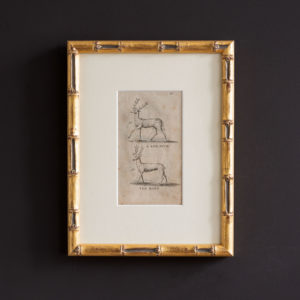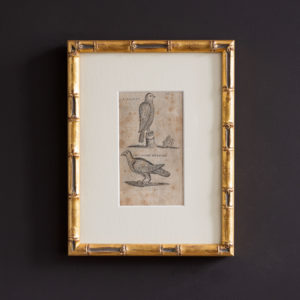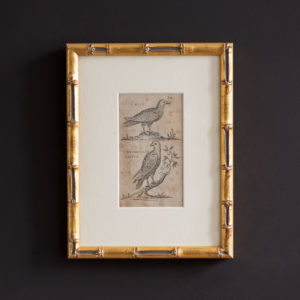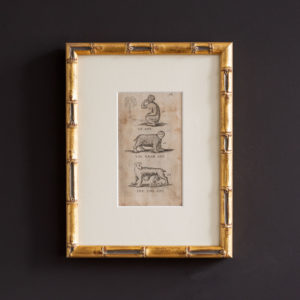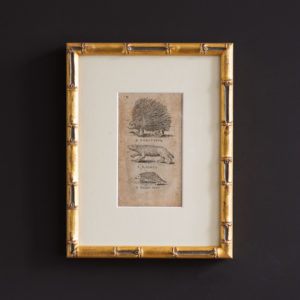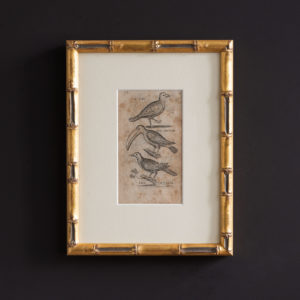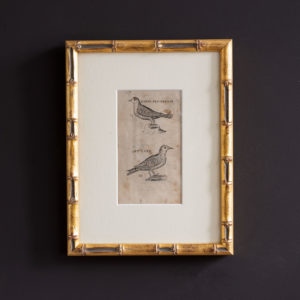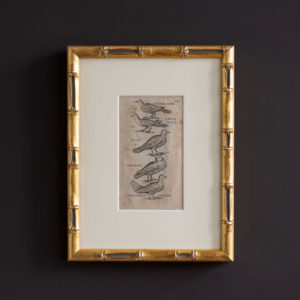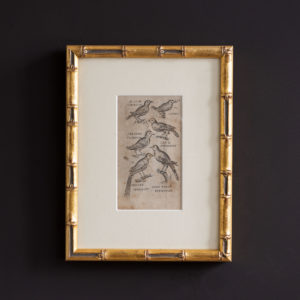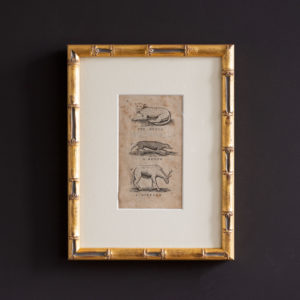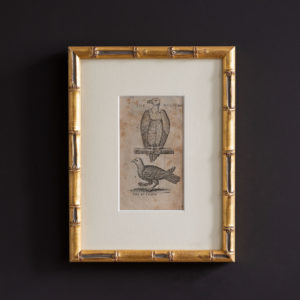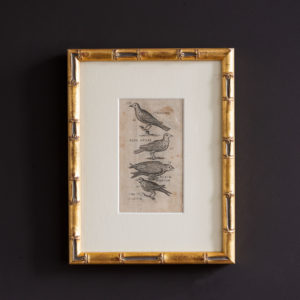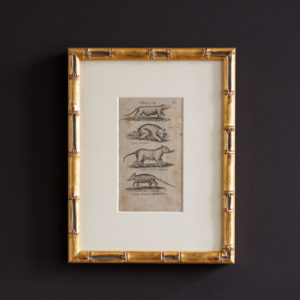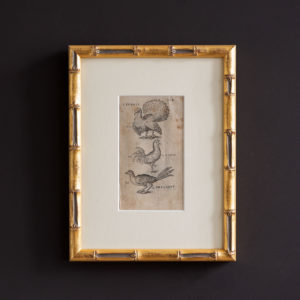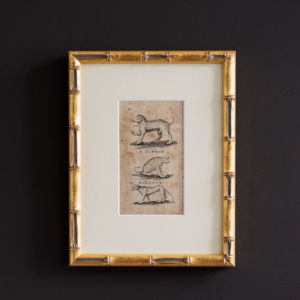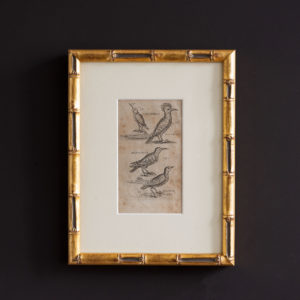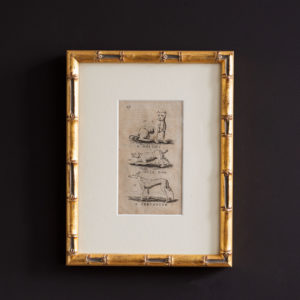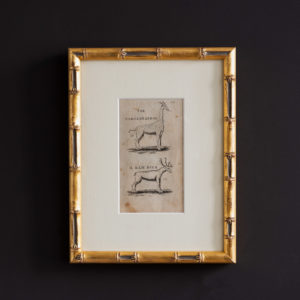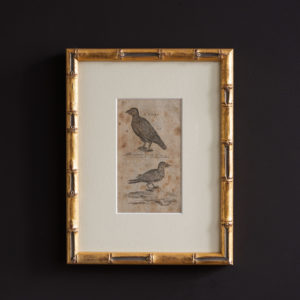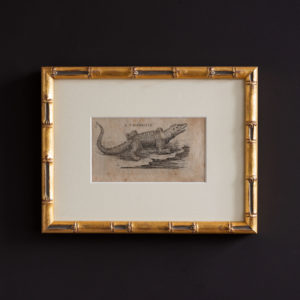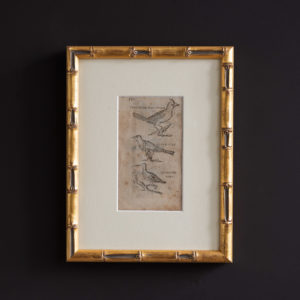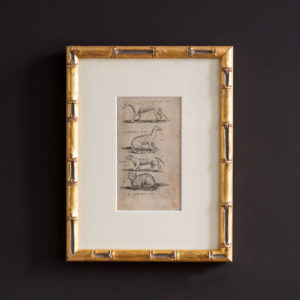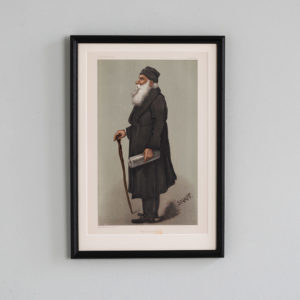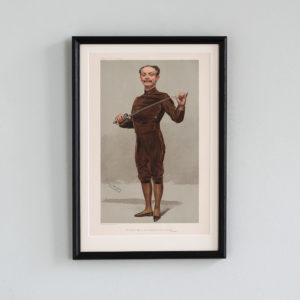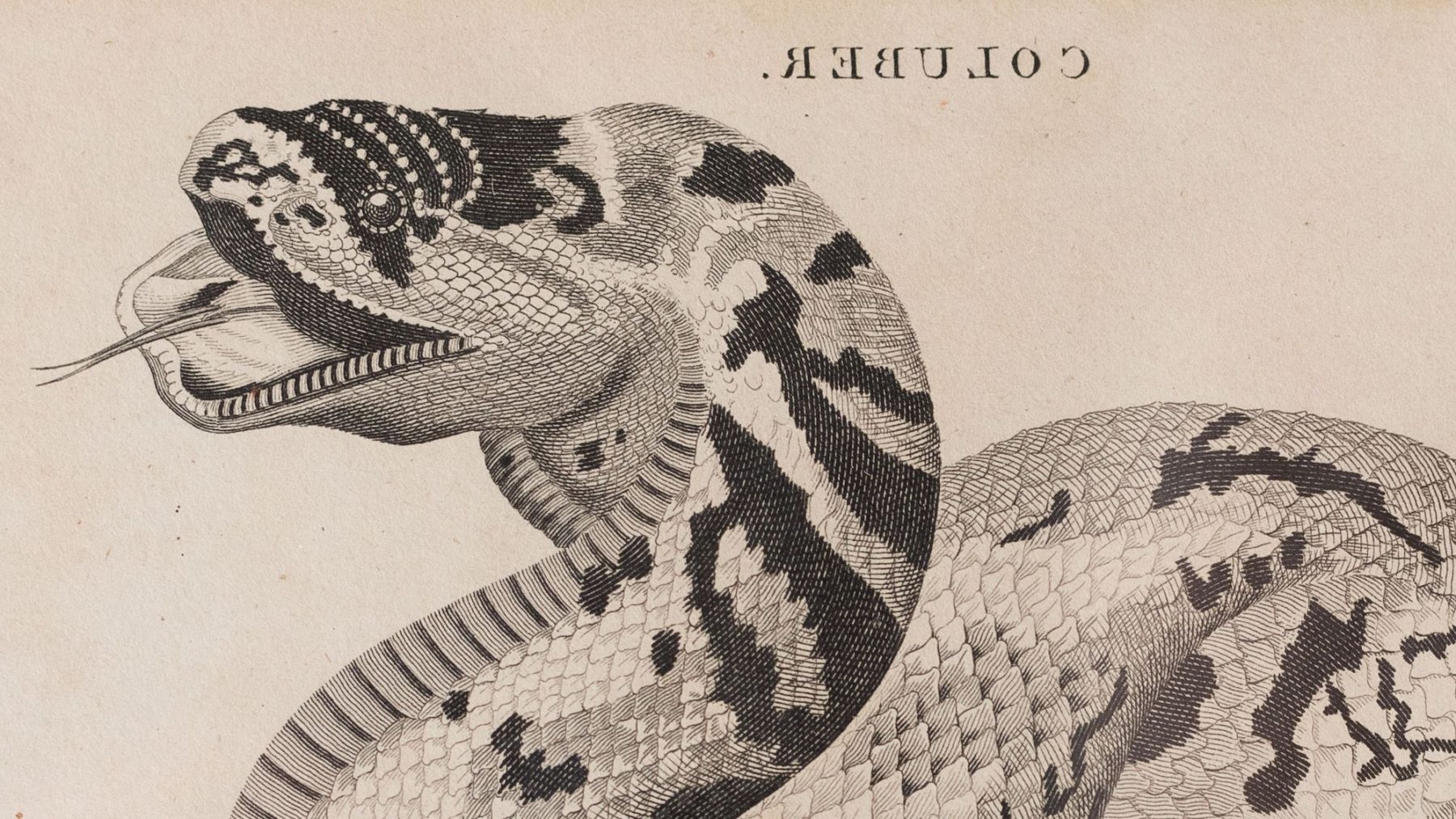
Prints
Bring life and colour to an interior with the inclusion of prints and art. Our selection provides a broad variety of lithographs and printed imagery. We specialise in natural history, plant and animal prints. Also collections of contemporary art including mid twentieth century artists like Picasso, Matisse and Braque. We also focus on maps of London including our local area Vauxhall, Central London and the River Thames.
977 items found
Page 5 of 10
-
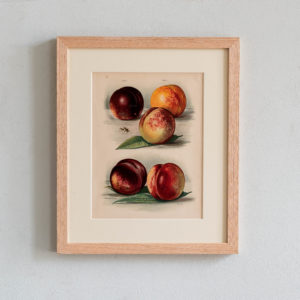
Fruit Growers Guide – Milton, Goldoni, Victoria, Newton, Stanwick Elruge,
£220 EachFruit Growers Guide – Milton, Goldoni, Victoria, Newton, Stanwick Elruge,
Published by John Wright in 1894.£220 Each -
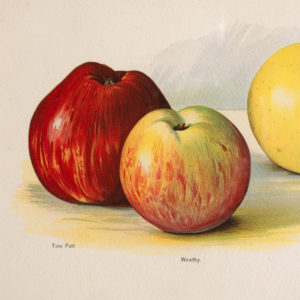
Fruit Growers Guide – Tom Putt, Wealthy, Queen Caroline,
£220 EachFruit Growers Guide – Tom Putt, Wealthy, Queen Caroline,
Published by John Wright in 1894.£220 Each -
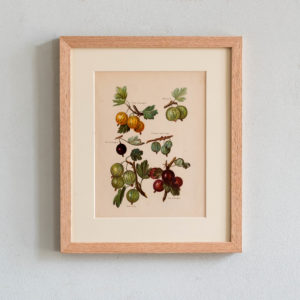
Fruit Growers Guide – Green Gage, Red Warrington, Red Champagne, Yellow Champagne, White Smith, Pitmaston Green Gage,
£220 EachFruit Growers Guide – Green Gage, Red Warrington, Red Champagne, Yellow Champagne, White Smith, Pitmaston Green Gage,
Published by John Wright in 1894.£220 Each -
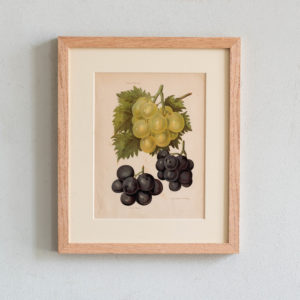
Fruit Growers Guide – Duke of Buccleuch, Gros Colman, Lady Downe’s Seedling,
£220 EachFruit Growers Guide – Duke of Buccleuch, Gros Colman, Lady Downe’s Seedling,
Published by John Wright in 1894.£220 Each -
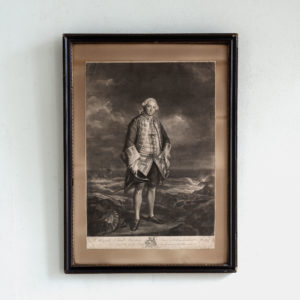
The Hon. Edward Boscawen
£220The Hon. Edward Boscawen
A framed and mounted three-quarter-length mezzotint portrait of Edward Boscawen (1711–1761) hero of the battle of Porto Bello during the War of Jenkins' Ear in 1739. His bravery earned him the naval nickname "Old Dreadnaught". Depicted wearing flag officer’s undress uniform and a wig. Boscawen stands on the rocky shore, and with his back to a stormy sea. A ship is visible in the distance on the left. This portrait was engraved in mezzotint by James Macardell and published by in London in 1757 by Robert Sayer. It is engraved after an original full-length painting by Sir Joshua Reynolds, which was painted between 1755 and 1757. Reynolds' painting remains in the possession of the Boscawen family under the current Lord Falmouth.£220 -
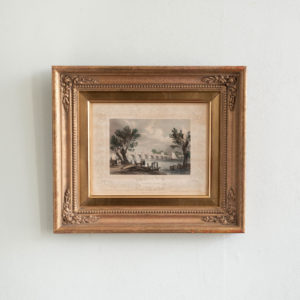
Vauxhall Bridge by Willian Tombleson
£220Vauxhall Bridge by Willian Tombleson
Engraved by Henry Winkles from the original study by William Tombleson. Originally published in the part-work series “Tombleson’s Views of the Thames and Medway” (London : 1833-1834).£220 -
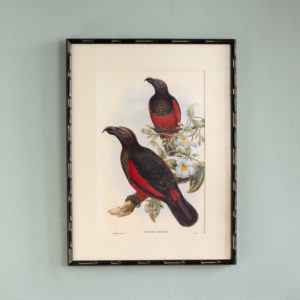
Birds of New Guinea by John Gould,
£220Birds of New Guinea by John Gould,
John Gould (1804-1881) was born in Lyme Regis, Dorset, the son of John Gould, a gardener, and his wife Elizabeth Clatworthy. Gould’s training was as a taxidermist rather than an artist, and in 1828 he was appointed animal preserver at the museum of the Zoological Society of London. In 1838-1840, Gould and his family went to the then relatively unknown continent of Australia, with the purpose of collecting and studying specimens. During his time there he discovered hundreds of new bird species and subspecies. As a result of the findings the fascinating works Birds of Australia and Mammals of Australia were published. Subsequently he was considered as the father of bird study in Australia. Gould himself did not execute finished drawings for any of his works, only providing rough pencil or watercolour sketches with notes for his artists to work from. The artists he employed included his wife Elizabeth, Edward Lear, Joseph Wolf, Henry Richter and Joseph Hart.£220 -
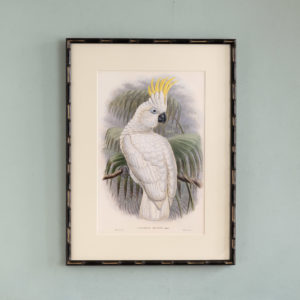
Birds of New Guinea by John Gould,
£220Birds of New Guinea by John Gould,
John Gould (1804-1881) was born in Lyme Regis, Dorset, the son of John Gould, a gardener, and his wife Elizabeth Clatworthy. Gould’s training was as a taxidermist rather than an artist, and in 1828 he was appointed animal preserver at the museum of the Zoological Society of London. In 1838-1840, Gould and his family went to the then relatively unknown continent of Australia, with the purpose of collecting and studying specimens. During his time there he discovered hundreds of new bird species and subspecies. As a result of the findings the fascinating works Birds of Australia and Mammals of Australia were published. Subsequently he was considered as the father of bird study in Australia. Gould himself did not execute finished drawings for any of his works, only providing rough pencil or watercolour sketches with notes for his artists to work from. The artists he employed included his wife Elizabeth, Edward Lear, Joseph Wolf, Henry Richter and Joseph Hart.£220 -
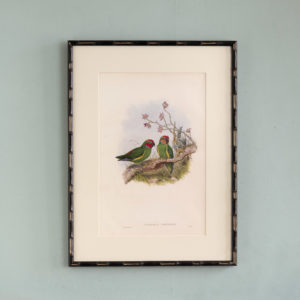
Birds of New Guinea by John Gould,
£220Birds of New Guinea by John Gould,
John Gould (1804-1881) was born in Lyme Regis, Dorset, the son of John Gould, a gardener, and his wife Elizabeth Clatworthy. Gould’s training was as a taxidermist rather than an artist, and in 1828 he was appointed animal preserver at the museum of the Zoological Society of London. In 1838-1840, Gould and his family went to the then relatively unknown continent of Australia, with the purpose of collecting and studying specimens. During his time there he discovered hundreds of new bird species and subspecies. As a result of the findings the fascinating works Birds of Australia and Mammals of Australia were published. Subsequently he was considered as the father of bird study in Australia. Gould himself did not execute finished drawings for any of his works, only providing rough pencil or watercolour sketches with notes for his artists to work from. The artists he employed included his wife Elizabeth, Edward Lear, Joseph Wolf, Henry Richter and Joseph Hart.£220 -
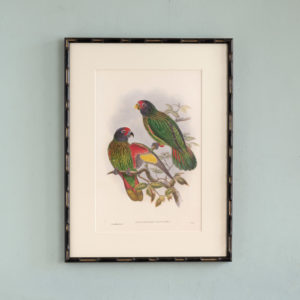
Birds of New Guinea by John Gould,
£220Birds of New Guinea by John Gould,
John Gould (1804-1881) was born in Lyme Regis, Dorset, the son of John Gould, a gardener, and his wife Elizabeth Clatworthy. Gould’s training was as a taxidermist rather than an artist, and in 1828 he was appointed animal preserver at the museum of the Zoological Society of London. In 1838-1840, Gould and his family went to the then relatively unknown continent of Australia, with the purpose of collecting and studying specimens. During his time there he discovered hundreds of new bird species and subspecies. As a result of the findings the fascinating works Birds of Australia and Mammals of Australia were published. Subsequently he was considered as the father of bird study in Australia. Gould himself did not execute finished drawings for any of his works, only providing rough pencil or watercolour sketches with notes for his artists to work from. The artists he employed included his wife Elizabeth, Edward Lear, Joseph Wolf, Henry Richter and Joseph Hart.£220 -
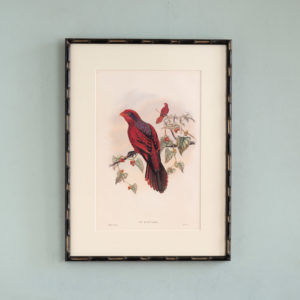
Birds of New Guinea by John Gould,
£220Birds of New Guinea by John Gould,
John Gould (1804-1881) was born in Lyme Regis, Dorset, the son of John Gould, a gardener, and his wife Elizabeth Clatworthy. Gould’s training was as a taxidermist rather than an artist, and in 1828 he was appointed animal preserver at the museum of the Zoological Society of London. In 1838-1840, Gould and his family went to the then relatively unknown continent of Australia, with the purpose of collecting and studying specimens. During his time there he discovered hundreds of new bird species and subspecies. As a result of the findings the fascinating works Birds of Australia and Mammals of Australia were published. Subsequently he was considered as the father of bird study in Australia. Gould himself did not execute finished drawings for any of his works, only providing rough pencil or watercolour sketches with notes for his artists to work from. The artists he employed included his wife Elizabeth, Edward Lear, Joseph Wolf, Henry Richter and Joseph Hart.£220 -
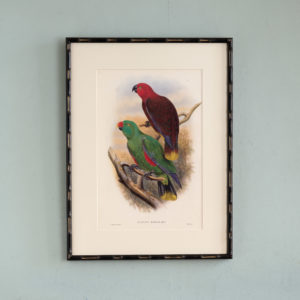
Birds of New Guinea by John Gould,
£220Birds of New Guinea by John Gould,
John Gould (1804-1881) was born in Lyme Regis, Dorset, the son of John Gould, a gardener, and his wife Elizabeth Clatworthy. Gould’s training was as a taxidermist rather than an artist, and in 1828 he was appointed animal preserver at the museum of the Zoological Society of London. In 1838-1840, Gould and his family went to the then relatively unknown continent of Australia, with the purpose of collecting and studying specimens. During his time there he discovered hundreds of new bird species and subspecies. As a result of the findings the fascinating works Birds of Australia and Mammals of Australia were published. Subsequently he was considered as the father of bird study in Australia. Gould himself did not execute finished drawings for any of his works, only providing rough pencil or watercolour sketches with notes for his artists to work from. The artists he employed included his wife Elizabeth, Edward Lear, Joseph Wolf, Henry Richter and Joseph Hart.£220 -
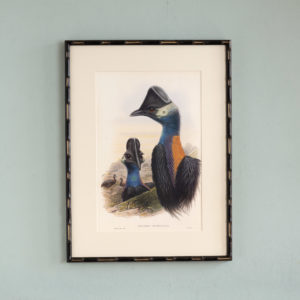
Birds of New Guinea by John Gould ,
£220Birds of New Guinea by John Gould ,
John Gould (1804-1881) was born in Lyme Regis, Dorset, the son of John Gould, a gardener, and his wife Elizabeth Clatworthy. Gould’s training was as a taxidermist rather than an artist, and in 1828 he was appointed animal preserver at the museum of the Zoological Society of London. In 1838-1840, Gould and his family went to the then relatively unknown continent of Australia, with the purpose of collecting and studying specimens. During his time there he discovered hundreds of new bird species and subspecies. As a result of the findings the fascinating works Birds of Australia and Mammals of Australia were published. Subsequently he was considered as the father of bird study in Australia. Gould himself did not execute finished drawings for any of his works, only providing rough pencil or watercolour sketches with notes for his artists to work from. The artists he employed included his wife Elizabeth, Edward Lear, Joseph Wolf, Henry Richter and Joseph Hart.£220 -
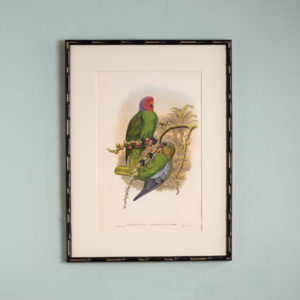
Birds of New Guinea by John Gould
£220Birds of New Guinea by John Gould
John Gould (1804-1881) was born in Lyme Regis, Dorset, the son of John Gould, a gardener, and his wife Elizabeth Clatworthy. Gould’s training was as a taxidermist rather than an artist, and in 1828 he was appointed animal preserver at the museum of the Zoological Society of London. In 1838-1840, Gould and his family went to the then relatively unknown continent of Australia, with the purpose of collecting and studying specimens. During his time there he discovered hundreds of new bird species and subspecies. As a result of the findings the fascinating works Birds of Australia and Mammals of Australia were published. Subsequently he was considered as the father of bird study in Australia. Gould himself did not execute finished drawings for any of his works, only providing rough pencil or watercolour sketches with notes for his artists to work from. The artists he employed included his wife Elizabeth, Edward Lear, Joseph Wolf, Henry Richter and Joseph Hart.£220 -
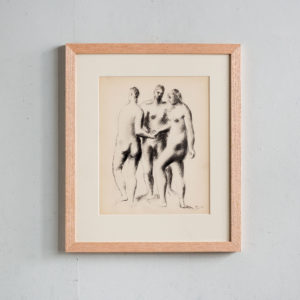
Picasso, lithographs,
£220Picasso, lithographs,
Produced for 'Editions des Chroniques du Jour' an important early work on Picasso.£220 -
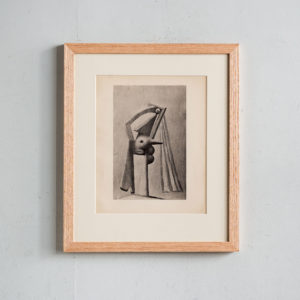
Picasso, lithographs,
£220Picasso, lithographs,
Produced for 'Editions des Chroniques du Jour' an important early work on Picasso.£220 -
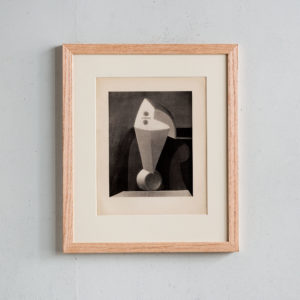
Picasso, lithographs
£220Picasso, lithographs
Produced for 'Editions des Chroniques du Jour' an important early work on Picasso.£220 -
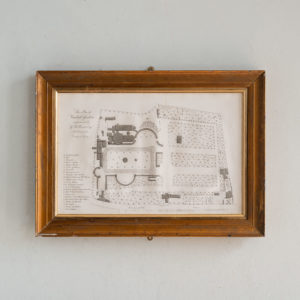
Plan of Vauxhall Gardens
£220Plan of Vauxhall Gardens
Originally engraved by William Simpkins (fl.1784-1825) for Owen Manning and William Bray’s “History and Antiquities of Surrey” (1804-1814).£220 -
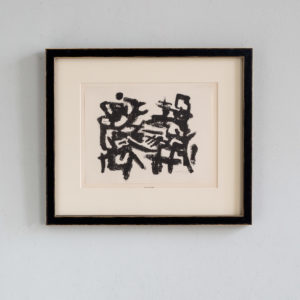
Cahiers D’Art 1953
£220Cahiers D’Art 1953
Cahiers D’Art was a journal, founded by the art critic Christian Zervos, in Paris at 14, rue du Dragon. It was published from 1926 to 1960, with a wartime interruption 1941 to 1943. Zervos was a Greek-French art historian, critic, collector, writer and publisher. The journal was noted for the quality of its articles and illustrations which unusually promoted Modern Art from all over the world rather than just Europe.£220 -
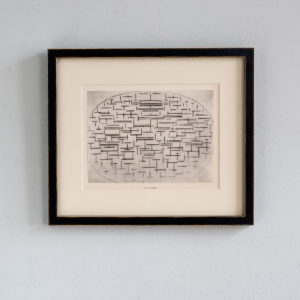
Cahiers D’Art 1953
£220Cahiers D’Art 1953
Cahiers D’Art was a journal, founded by the art critic Christian Zervos, in Paris at 14, rue du Dragon. It was published from 1926 to 1960, with a wartime interruption 1941 to 1943. Zervos was a Greek-French art historian, critic, collector, writer and publisher. The journal was noted for the quality of its articles and illustrations which unusually promoted Modern Art from all over the world rather than just Europe.£220 -
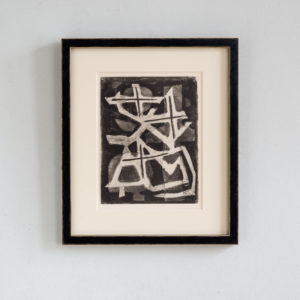
Cahiers D’Art 1953
£220Cahiers D’Art 1953
Cahiers D’Art was a journal, founded by the art critic Christian Zervos, in Paris at 14, rue du Dragon. It was published from 1926 to 1960, with a wartime interruption 1941 to 1943. Zervos was a Greek-French art historian, critic, collector, writer and publisher. The journal was noted for the quality of its articles and illustrations which unusually promoted Modern Art from all over the world rather than just Europe.£220 -
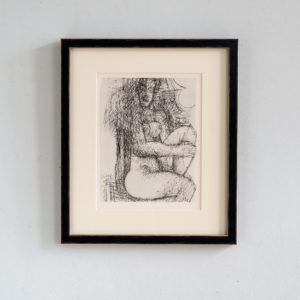
Cahiers D’Art 1953
£220Cahiers D’Art 1953
Cahiers D’Art was a journal, founded by the art critic Christian Zervos, in Paris at 14, rue du Dragon. It was published from 1926 to 1960, with a wartime interruption 1941 to 1943. Zervos was a Greek-French art historian, critic, collector, writer and publisher. The journal was noted for the quality of its articles and illustrations which unusually promoted Modern Art from all over the world rather than just Europe.£220 -
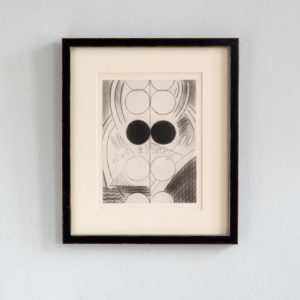
Cahiers D’Art 1953
£220Cahiers D’Art 1953
Cahiers D’Art was a journal, founded by the art critic Christian Zervos, in Paris at 14, rue du Dragon. It was published from 1926 to 1960, with a wartime interruption 1941 to 1943. Zervos was a Greek-French art historian, critic, collector, writer and publisher. The journal was noted for the quality of its articles and illustrations which unusually promoted Modern Art from all over the world rather than just Europe.£220 -
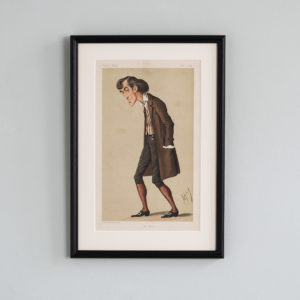
The Bells,
£220The Bells,
Framed Chromolithograph by APE (Carlo Pellegrini) picturing the stage actor and impresario Henry Irving. Born into humble circumstances in the West Country, Irving went on to establish himself as a giant of the West End. During his long residence at the Lyceum, beginning with his production of The Bells in 1871, he cemented his own and his theatre company's position as the keeper and type of the English classical theatrical tradition. Irving would later became the model for Bram Stoker's Dracula and was the first actor to be conferred the honour of Knighthood. Irving died on stage in 1905 after giving the final lines of Beckett by Alfred Lord Tennyson ''Into thy hands, O Lord, into thy hands". His ashes are interred in Westminster Abbey, the first cremation prior to internment permitted at the Abbey.£220 -
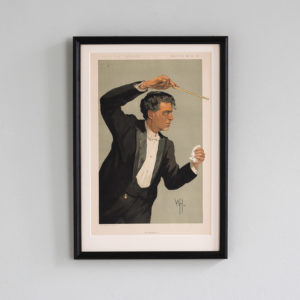
The Intermezzo,
£220The Intermezzo,
Framed Chromolithograph by WH (Wallace Hester) picturing the Italian composer Pietro Mascagni. In 1890 Mascagni delighted the Italian nation with his exquisite opera 'Cavalleria Rusticana'. Written in response to a competition for young composers in 1888, Mascagni had not actually intended to finally submit his work as he doubted it's quality. The composer's wife found the draft hidden in a draw and, seeing it's worth, illicitly submitted it on his behalf on the final day of the competition. The opera was an instant and unqualified success, earning Mascagni 40 curtain calls on the first night as well as first prize in the contest and receiving a standing ovation such as the Teatro Constanzo in Rome had not seen 'in many years'. The 'intermezzo' from Cavaleria Rusticana was particularly noted for its beauty and charm and has become famous in it's own right, appearing in the soundtrack of the Martin Scorsese film 'Raging Bull'.£220 -
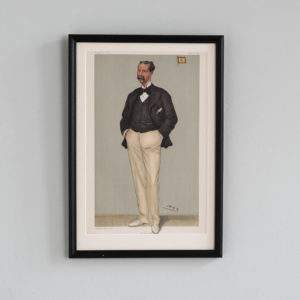
Shamrock,
£220Shamrock,
Framed chromolithograph picturing Sir Thomas Lipton, self made man, tea-merchant and founder of Lipton Tea, philanthropist and yachtsman. Sir Thomas became admired as 'the best of all losers' for his gracious and gentlemanly manner of defeat as he contested and lost 5 straight Americas cups in his yacht 'Shamrock', a standing record for failure in that contest. Inducted into the America's Cup Hall of Fame in 1993 he also inaugurated the Sir Thomas Lipton trophy, a forerunner of the football World Cup. He was admitted to the Royal Yacht Squadron shortly before his death, a great achievement for the son of an itinerant labourer born in a Gorbals tenement.£220 -
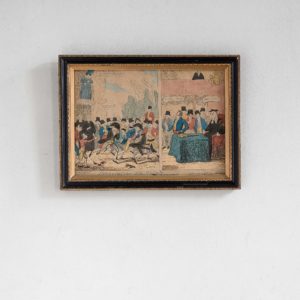
Persecution of the Saints.
£220Persecution of the Saints.
An original hand coloured etching by George Cruikshank.On 6 June 1820, Queen Caroline, estranged wife of George IV, returned from her exile on the continent, claiming her right to be crowned as Queen. The perceived harsh treatment of the Queen by the King and his Tory supporters caused her to become a figurehead for the political unrest that had been made worse by the Peterloo Massacre of 16 August 1819.In a desperate effort to rid himself of this turbulent wife George the IV ventured to have Caroline found guilty of adultery - the only legal justification for divorce at the time. All the while the King had preempitvely caused Caroline's name to be omitted from the Prayer for the Royal Family in churches throughout England.With tensions rising and both sides digging in over the contest the cause of Queen Caroline began to assume for the parties involved a symbolic and totemic significance. Queen Caroline, to the Whigs and Radicals represented injured honesty and probity in public life while her exclusion from the coronation and regal honours stood for the debasement of the constitution and the irregular, arbitrary and incompetent tyranny of the Tory loyalists. The situation was becoming so febrile that many feared political and factional violence was inevitable.Into this contest stepped William Wilberforce, the great independent MP and abolitionist campaigner. The small informal group of evangelical Christians who surrounded him in Parliament were known, perhaps mockingly, as The Saints. Wilberforce thought that by the force of his own unimpeachable integrity he could persuade Caroline to abdicate some of her rights as the Royal consort and thereby forestall what had begun to look like a revolutionary confrontation.Wilberforce attended at the Queen's residence on Portman Street in West London and presented a Motion for an Address to the Queen. He had been encouraged by Lord Brougham to believe that the Queen would accept the omission of her name from the public prayers. The Queen, standing in her rights and her honesty, flatly refused. Meanwhile the Radical London mob appears to have cajolled and roughed-up the sanctimonious delegation as they fled for their safety back to the House of Commons.As a result of the failure of Wilberforce’s attempts at mediation led to the trial of Queen Caroline and subsequent exclusion from the coronation ceremony.£220 -
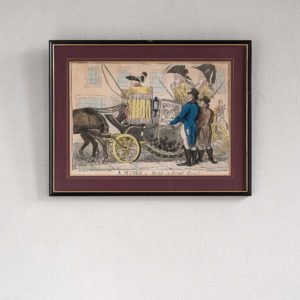
A Muddy, a Sketch in Bond Street.
£220A Muddy, a Sketch in Bond Street.
A hand coloured etching by Isaac Cruikshank. A landau coach, nicknamed a 'Muddy' bespattered with grime, halts in Bond street, as two ladies look out of the window to chat with two fashionably dressed gentlemen. The coach driver is protected by a curtained seat, and two tall liveried attendants stand at the rear, eyeing the exchange archly. Before the rise and triumphant progress of Napoleon Bonaparte sparked a patriotic reaction in Britain, the circle of caricaturists and cartoonists working in London took their aim at the perceived voluptuary tendencies of the fashionable establishment in London. The French Wars and the Revolution had led to a period of social and economic hardship in Britain which seemingly left only the wealthy and well-connected untouched. Here Isaac Cruikshank takes aim at the folly and vice of a self-indulgent set. Isaac Cruikshank was the son of a dispossessed Jacobite customs inspector. After leaving Edinburgh for London in 1783 he sustained a precarious existence as an artist and caricaturist and, along with James Gillray and Thomas Rowlandson, contributed to what has been called 'the golden age of British caricature'. Isaac Cruikshank died of alcohol poisoning after a winning a drinking contest one evening in 1811. Two of his sons Isaac Robert Cruikshank, and George Cruikshank carried on the family tradition into the middle of the 19th Century.£220 -
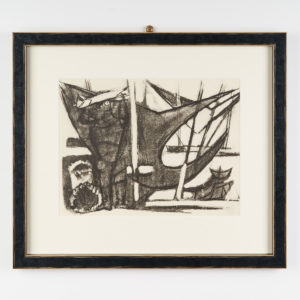
Édouard Pignon, Cahiers D’Art collotype print
£220Édouard Pignon, Cahiers D’Art collotype print
A collotype print from 'Cahiers D'Art' printed in Paris, 1953.£220 -
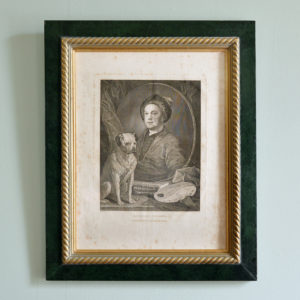
Painter and His Pug, after William Hogarth.
£220 -
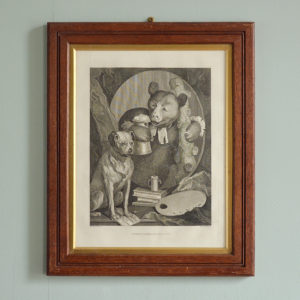
The Bruiser, after William Hogarth.
£220 -
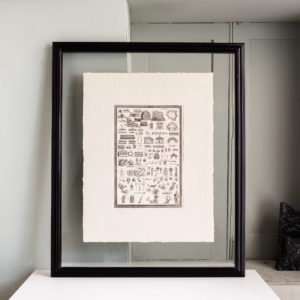
Piranesi, Diverse maniere d’adornare i cammini ed ogni altra parte degli edifizi desunte dall’architettura egizia, Etrusca e Greca,
£200Piranesi, Diverse maniere d’adornare i cammini ed ogni altra parte degli edifizi desunte dall’architettura egizia, Etrusca e Greca,
Giovanni Battista Piranesi, was an etcher, engraver, designer, architect, archaeologist, and theorist.£200 -
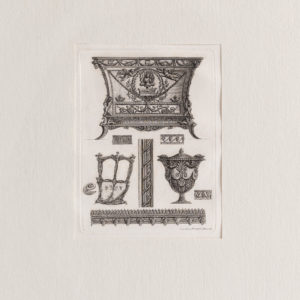
Piranesi, Designs for furniture, 1769
£200Piranesi, Designs for furniture, 1769
Giovanni Battista Piranesi, was an etcher, engraver, designer, architect, archaeologist, and theorist.£200 -
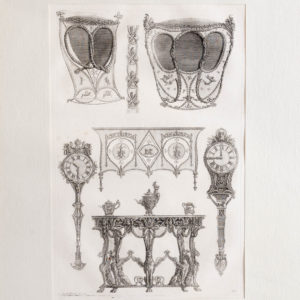
Piranesi, Designs for furniture, 1769
£200Piranesi, Designs for furniture, 1769
Giovanni Battista Piranesi, was an etcher, engraver, designer, architect, archaeologist, and theorist.£200 -
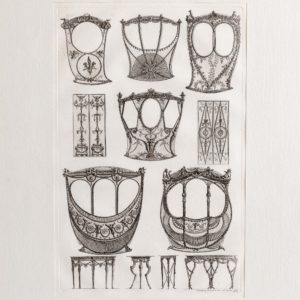
Piranesi, Designs for furniture, 1769
£200Piranesi, Designs for furniture, 1769
Giovanni Battista Piranesi, was an etcher, engraver, designer, architect, archaeologist, and theorist.£200 -
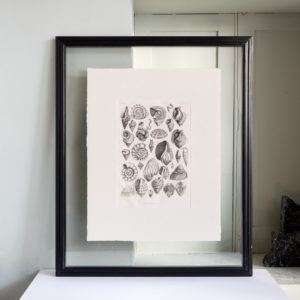
Piranesi, Different shells thought to inspire the forms of Etruscan vases, 1769
£200Piranesi, Different shells thought to inspire the forms of Etruscan vases, 1769
Giovanni Battista Piranesi, was an etcher, engraver, designer, architect, archaeologist, and theorist.£200 -
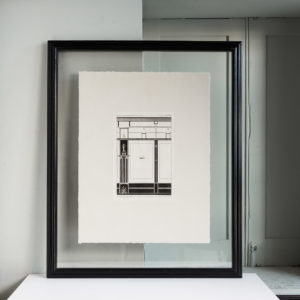
Pompei Interior, copper-engravings published 1796
£200 -
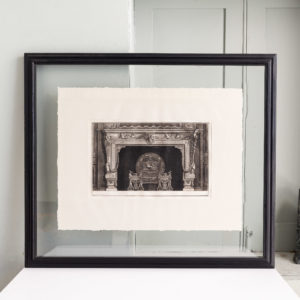
Giovanni Battista Piranesi, Design for a Fireplace, published 1769.
£200Giovanni Battista Piranesi, Design for a Fireplace, published 1769.
Giovanni Battista Piranesi, was an etcher, engraver, designer, architect, archaeologist, and theorist.£200 -
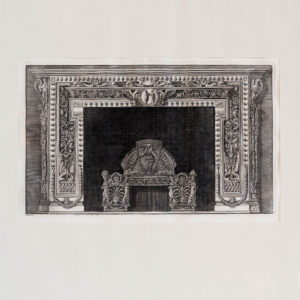
Giovanni Battista Piranesi, Design for a Fireplace, published 1769.
£200Giovanni Battista Piranesi, Design for a Fireplace, published 1769.
Giovanni Battista Piranesi, was an etcher, engraver, designer, architect, archaeologist, and theorist.£200 -
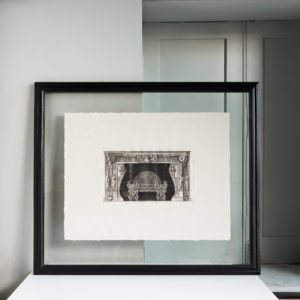
Giovanni Battista Piranesi, Design for a Fireplace, published 1769.
£200Giovanni Battista Piranesi, Design for a Fireplace, published 1769.
Giovanni Battista Piranesi, was an etcher, engraver, designer, architect, archaeologist, and theorist.£200 -
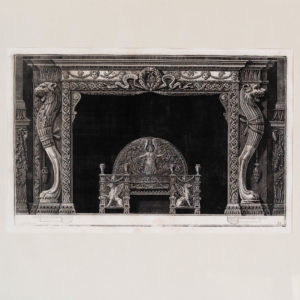
Giovanni Battista Piranesi, Design for a Fireplace, published 1769.
£200Giovanni Battista Piranesi, Design for a Fireplace, published 1769.
Giovanni Battista Piranesi, was an etcher, engraver, designer, architect, archaeologist, and theorist.£200 -
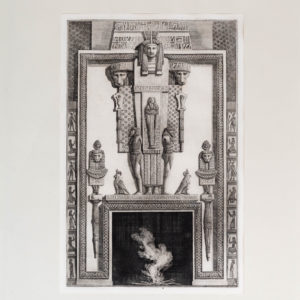
Giovanni Battista Piranesi, Design for an Egyptian style Fireplace, published 1769.
£200Giovanni Battista Piranesi, Design for an Egyptian style Fireplace, published 1769.
Giovanni Battista Piranesi, was an etcher, engraver, designer, architect, archaeologist, and theorist.£200 -
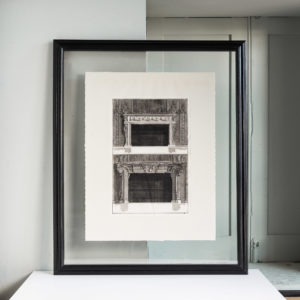
Giovanni Battista Piranesi, Designs for two Fireplaces, published 1769.
£200Giovanni Battista Piranesi, Designs for two Fireplaces, published 1769.
Giovanni Battista Piranesi, was an etcher, engraver, designer, architect, archaeologist, and theorist.£200 -
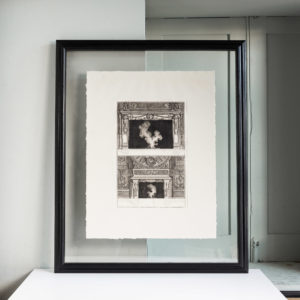
Giovanni Battista Piranesi, Designs for two Fireplaces, published 1769.
£200Giovanni Battista Piranesi, Designs for two Fireplaces, published 1769.
Giovanni Battista Piranesi, was an etcher, engraver, designer, architect, archaeologist, and theorist.£200 -
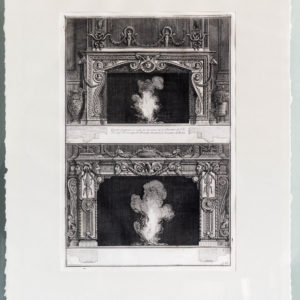
Giovanni Battista Piranesi, Designs for two Fireplaces, published 1769.
£200Giovanni Battista Piranesi, Designs for two Fireplaces, published 1769.
Giovanni Battista Piranesi, was an etcher, engraver, designer, architect, archaeologist, and theorist.£200 -
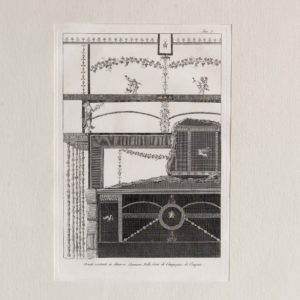
Pompei Interior, copper-engravings published 1796
£200 -
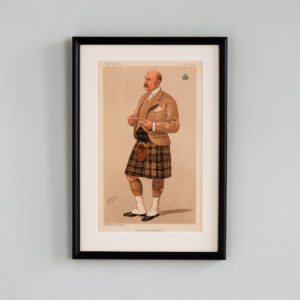
The Queen’s Lord Steward,
£200The Queen’s Lord Steward,
Framed Chromolithograph by Spy (Leslie Ward) depicting Gavin Campbell 1st Marquess of Breadalbane KG PC JP DL. Scotch Nobleman and Liberal politician. Lord Steward to the Royal Household of Queen Victoria.£200 -
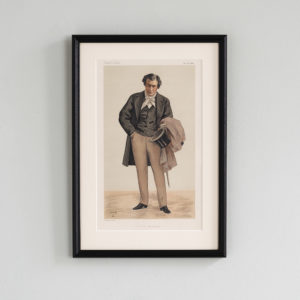
Ficelle Dramatique,
£200Ficelle Dramatique,
Framed Chromolithograph by T (Theobald Chartran) picturing Victorien Sardou, French dramatist, playwright of the original 'Tosca' and developer, along with Eugene Scribe, of the 'Well Made Play'. Much maligned by 'socially radical' playwrights, his method of composition which focused on concise plotting, compelling narrative and a solid structure shorn of intellectual or philosophical pretensions was nonetheless adapted for use by figures such as George Bernard Shaw, Oscar Wilde and J.B. Priestly. Shaw in particular affected to scorn Sardou's creations as 'Sardoodles' but still condescended to employ a Sardou structure on his breakout success, 'Man and Superman' in 1902.£200 -
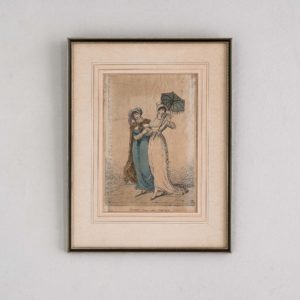
Seven Shilling Pieces
£200Seven Shilling Pieces
A hand coloured Georgian satire on the cost of female companionship at the Covent Garden Opera. Two courtesans fashionably dressed in the style of the period are shown arm-in-arm, walking along a pavement. One (right) holds up an open sunshade and a card inscribed 'Miss Oldprice Covent Garden'.£200 -
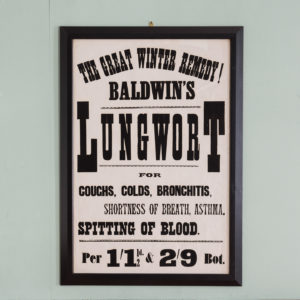
Original chemist shop advertising poster, Baldwin’s Lungwort
£200Original chemist shop advertising poster, Baldwin’s Lungwort
Original woodblock, letterpress poster published c1880 for G. Baldwin & Co, Walworth Road A great historical item for those living south of the river, a very small quantity are available, but once gone, they are gone forever! Condition consistent with a 120 year old loose piece of paper, tears, stains small losses etc.£200 -
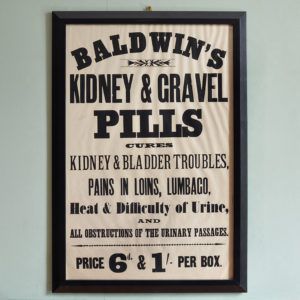
Original chemist shop advertising poster, Baldwin’s Kidney and Gravel Pills
£200Original chemist shop advertising poster, Baldwin’s Kidney and Gravel Pills
Original woodblock, letterpress poster published c1880 for G. Baldwin & Co, Walworth Road A great historical item for those living south of the river, a very small quantity are available, but once gone, they are gone forever! Condition consistent with a 120 year old loose piece of paper, tears, stains small losses etc.£200 -
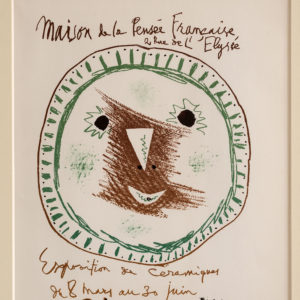
The Posters of Picasso
£195 eachThe Posters of Picasso
Original lithographs showing the output of Picasso for his exhibition posters. Mounted and framed black.£195 each -
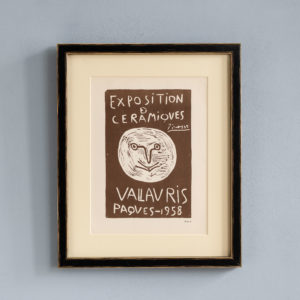
The Posters of Picasso
£195 eachThe Posters of Picasso
Original lithographs showing the output of Picasso for his exhibition posters. Mounted and framed black.£195 each -
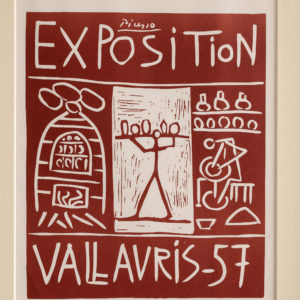
The Posters of Picasso
£195 eachThe Posters of Picasso
Original lithographs showing the output of Picasso for his exhibition posters. Mounted and framed black.£195 each -
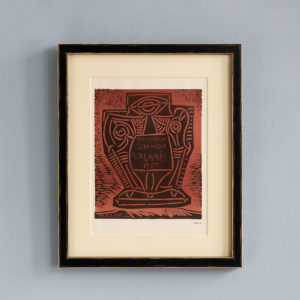
The Posters of Picasso
£195 eachThe Posters of Picasso
Original lithographs showing the output of Picasso for his exhibition posters. Mounted and framed black.£195 each -
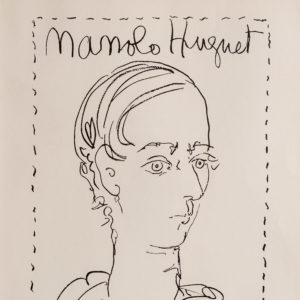
The Posters of Picasso
£195 eachThe Posters of Picasso
Original lithographs showing the output of Picasso for his exhibition posters. Mounted and framed black.£195 each -
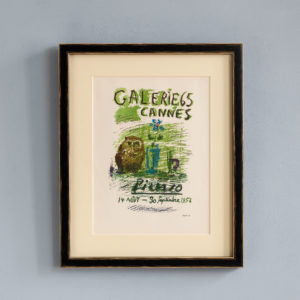
The Posters of Picasso
£195 eachThe Posters of Picasso
Original lithographs showing the output of Picasso for his exhibition posters. Mounted and framed black.£195 each -
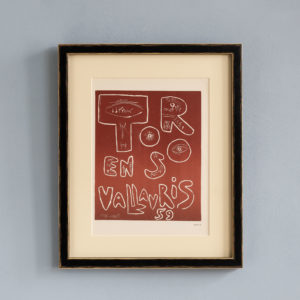
The Posters of Picasso
£195 eachThe Posters of Picasso
Original lithographs showing the output of Picasso for his exhibition posters. Mounted and framed black.£195 each -
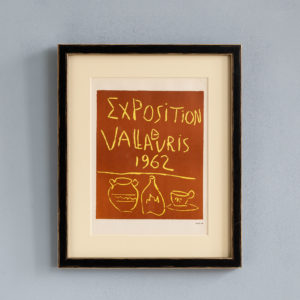
The Posters of Picasso
£195 eachThe Posters of Picasso
Original lithographs showing the output of Picasso for his exhibition posters. Mounted and framed black.£195 each -
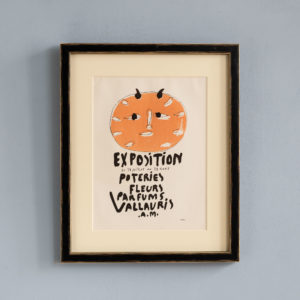
The Posters of Picasso
£195 eachThe Posters of Picasso
Original lithographs showing the output of Picasso for his exhibition posters. Mounted and framed black.£195 each -
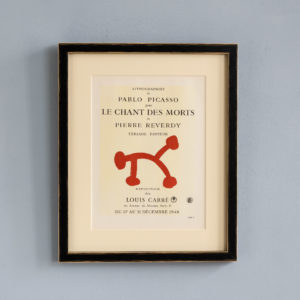
The Posters of Picasso
£195 eachThe Posters of Picasso
Original lithographs showing the output of Picasso for his exhibition posters. Mounted and framed black.£195 each -
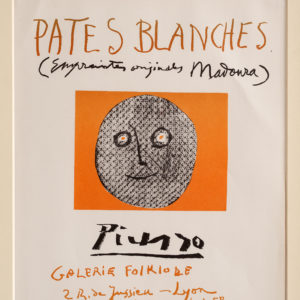
The Posters of Picasso
£195 eachThe Posters of Picasso
Original lithographs showing the output of Picasso for his exhibition posters. Mounted and framed black.£195 each -
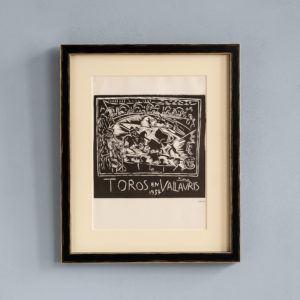
The Posters of Picasso
£195 eachThe Posters of Picasso
Original lithographs showing the output of Picasso for his exhibition posters. Mounted and framed black.£195 each -
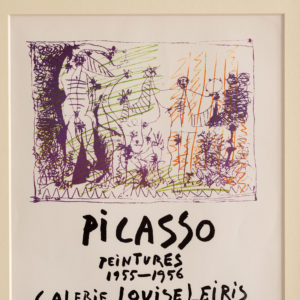
The Posters of Picasso
£195 eachThe Posters of Picasso
Original lithographs showing the output of Picasso for his exhibition posters. Mounted and framed black.£195 each -
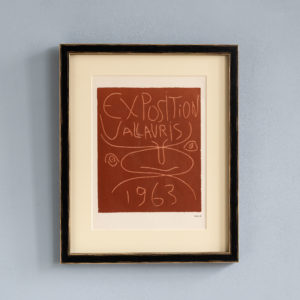
The Posters of Picasso
£195 eachThe Posters of Picasso
Original lithographs showing the output of Picasso for his exhibition posters. Mounted and framed black.£195 each -
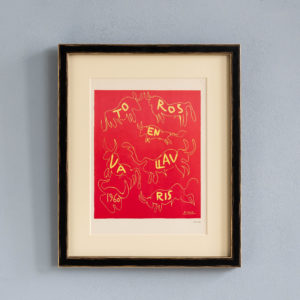
The Posters of Picasso
£195 eachThe Posters of Picasso
Original lithographs showing the output of Picasso for his exhibition posters. Mounted and framed black.£195 each -
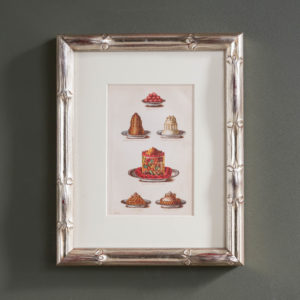
Mrs Beeton, original chromolithographs
£195 eachMrs Beeton, original chromolithographs
Isabella Mary Beeton was an English journalist, editor and writer. In 1859 with her husband, Mrs Beeton launched a series of 48-page monthly supplements to The Englishwoman's Domestic Magazine; the 24 instalments were published in one volume as Mrs Beeton's Book of Household Management.£195 each -
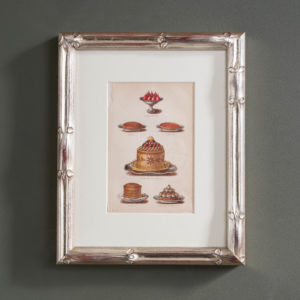
Mrs Beeton, original chromolithographs
£195 eachMrs Beeton, original chromolithographs
Isabella Mary Beeton was an English journalist, editor and writer. In 1859 with her husband, Mrs Beeton launched a series of 48-page monthly supplements to The Englishwoman's Domestic Magazine; the 24 instalments were published in one volume as Mrs Beeton's Book of Household Management.£195 each -
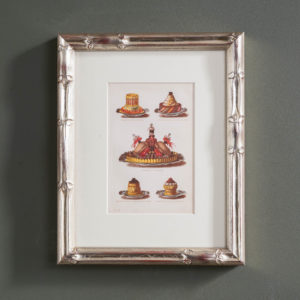
Mrs Beeton, original chromolithographs
£195 eachMrs Beeton, original chromolithographs
Isabella Mary Beeton was an English journalist, editor and writer. In 1859 with her husband, Mrs Beeton launched a series of 48-page monthly supplements to The Englishwoman's Domestic Magazine; the 24 instalments were published in one volume as Mrs Beeton's Book of Household Management.£195 each -
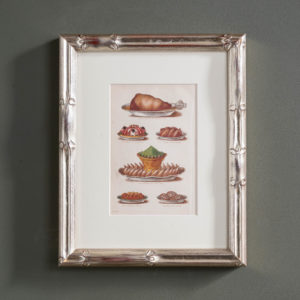
Mrs Beeton, original chromolithographs
£195 eachMrs Beeton, original chromolithographs
Isabella Mary Beeton was an English journalist, editor and writer. In 1859 the with her husband Mrs Beeton launched a series of 48-page monthly supplements to The Englishwoman's Domestic Magazine; the 24 instalments were published in one volume as Mrs Beeton's Book of Household Management.£195 each -
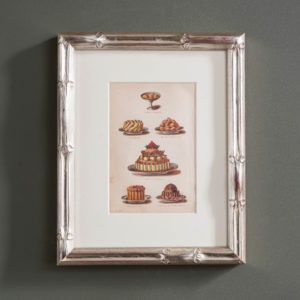
Mrs Beeton, original chromolithographs
£195 eachMrs Beeton, original chromolithographs
Isabella Mary Beeton was an English journalist, editor and writer. In 1859 with her husband, Mrs Beeton launched a series of 48-page monthly supplements to The Englishwoman's Domestic Magazine; the 24 instalments were published in one volume as Mrs Beeton's Book of Household Management.£195 each -
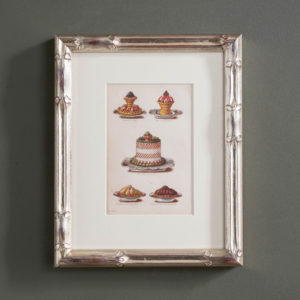
Mrs Beeton, original chromolithographs
£195 eachMrs Beeton, original chromolithographs
Isabella Mary Beeton was an English journalist, editor and writer. In 1859 with her husband, Mrs Beeton launched a series of 48-page monthly supplements to The Englishwoman's Domestic Magazine; the 24 instalments were published in one volume as Mrs Beeton's Book of Household Management.£195 each -
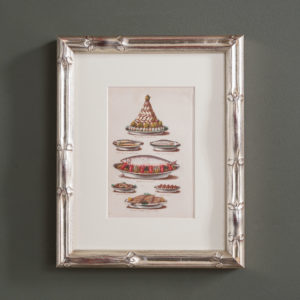
Mrs Beeton, original chromolithographs
£195 eachMrs Beeton, original chromolithographs
Isabella Mary Beeton was an English journalist, editor and writer. In 1859 with her husband, Mrs Beeton launched a series of 48-page monthly supplements to The Englishwoman's Domestic Magazine; the 24 instalments were published in one volume as Mrs Beeton's Book of Household Management.£195 each -

Mrs Beeton, original chromolithographs
£195 eachMrs Beeton, original chromolithographs
Isabella Mary Beeton was an English journalist, editor and writer. In 1859 with her husband, Mrs Beeton launched a series of 48-page monthly supplements to The Englishwoman's Domestic Magazine; the 24 instalments were published in one volume as Mrs Beeton's Book of Household Management.£195 each -
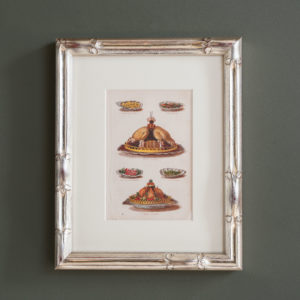
Mrs Beeton, original chromolithographs
£195 eachMrs Beeton, original chromolithographs
Isabella Mary Beeton was an English journalist, editor and writer. In 1859 with her husband, Mrs Beeton launched a series of 48-page monthly supplements to The Englishwoman's Domestic Magazine; the 24 instalments were published in one volume as Mrs Beeton's Book of Household Management.£195 each
Featured Items
-
No records found

